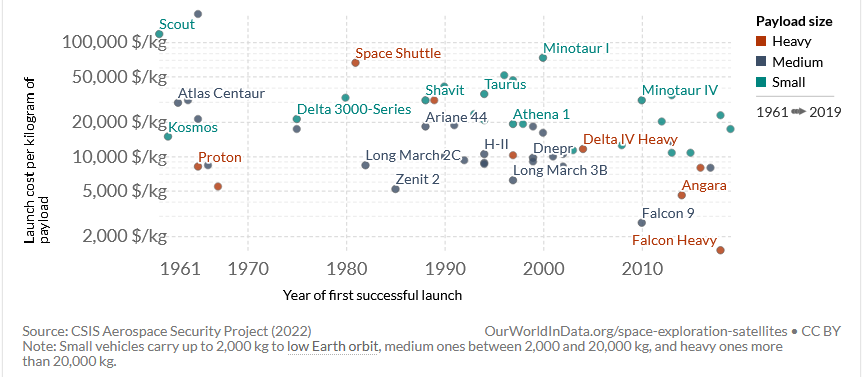
(Image Credit: Pexels/pixabay)
According to CITI, the space economy, with the public and private groups, is expected to surpass $1 trillion a year by 2040, an increase from $370 billion in 2020. This includes profits generated from space manufacturing, rocket launches, asteroid mining, tourism, and more.
There aren’t many options in terms of teleportation just yet. For now, humanity will just keep using rockets to send people and resources into space. So making profits starts at the launchpad. Some aerospace companies out there are designing rockets, and one of them is working on the best way to reach orbit. It then wants to sell that service to those aiming to get off the ground.
For example, SpaceX uses reusable rockets, which reduces costs, and makes the company more established in that area. SpaceX already launched the largest reusable rocket called Starship, but it blew up during its flight test. Despite that, the rocket still has the potential to reduce launch costs due to its massive size. Although the Falcon 9 costs $62 million to transport 50,000 pounds to low-Earth orbit, Starship could just cost $10 million to send 300,000 pounds to low-Earth orbit.

The chart shows launch costs. (Image Credit: Our World In Data)
Startups are coming up with unique rocket designs to make them competitive in the launch services market. SpinLaunch is testing a system designed to heave satellites into orbit, and ABL Space Systems is building a mobile rocket/launchpad that flies from a flat surface based on the consumer’s preference. Relativity Space recently launched a 3D-printed rocket, which didn’t reach orbit.
Rockets sometimes send spacecraft to planets or asteroids but usually deploy satellites in orbit. Approximately 5,500 active satellites orbit the Earth, and experts believe over 60,000 could be there by 2030 due to decreasing launch costs. Even though it’s good news for the space economy, that could become a problem for astronomy since the light disrupts star-gazing.
Amazon, OneWeb, and SpaceX develop and deploy hundreds of satellites for the global internet. Meanwhile, others manufacture low-cost, reliable satellites that deliver payloads, like science experiments or new camera systems. Then we have companies like Varda Space Industries and ThinkOrbital building advanced satellites to autonomously manufacture products, including semiconductors, fiber optic cables, and biological products.
Mineable resources also have value in the long run. Extracting resources from the moon and Mars could support astronauts in long-term missions. It would also allow space agencies to reduce costs since they won’t need to deliver supplies from the Earth. NASA has contracted solar mining partners to extract water for food growth, rocket fuel, and astronauts to drink.
Additionally, we could take advantage of asteroids, the moon, and space bodies to mine resources and use them on Earth. That includes rare metals and minerals for fusion reactors. Asterank says that mining the top ten easiest-to-reach asteroids could generate $1.5 trillion in revenue.
Even though we’re still uncertain if humanity can grab those resources from space rocks and transport them back to Earth, other companies are working toward that goal. For example, Astroforge expects to land on an asteroid before the end of the year.
Have a story tip? Message me at: http://twitter.com/Cabe_Atwell
